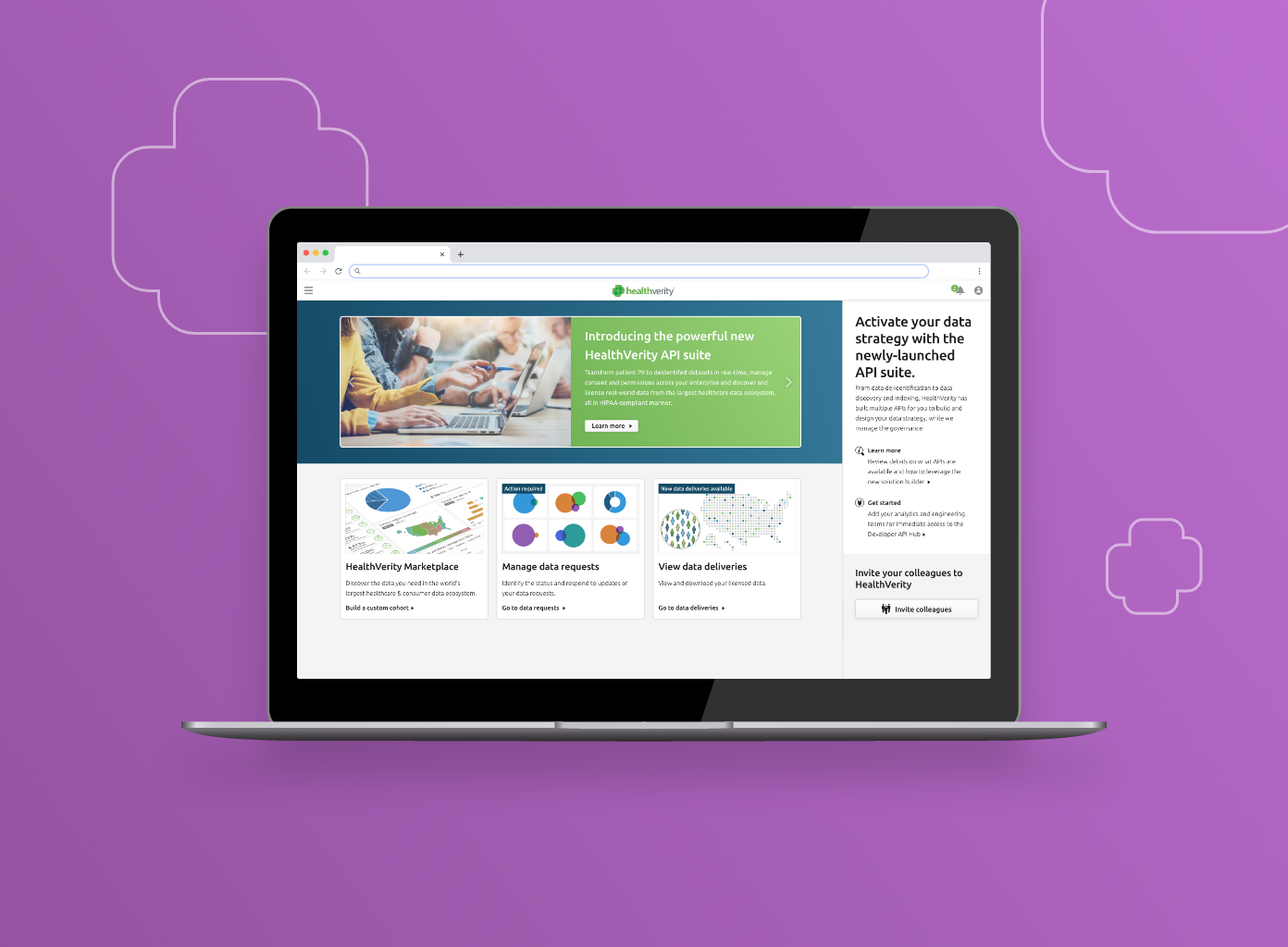Building a modern data infrastructure within today’s healthcare enterprise is challenging on many levels. Your organization may have boundless data, but if that data contains PII (personally identifiable information), its uses become very limited. How do you properly govern this data in a HIPAA-compliant manner? You might begin by stripping out the identifiable data and replacing it with a random token. But to do this consistently across datasets, you now have to create a mapping table, or some other methodology which may inevitably be reversible, thus revealing the originating personal data. And what happens if someone wants to share data with you without the identifying details? Will their data be interoperable with yours?
HealthVerity set out to solve this very problem years ago with the launch of the HealthVerity ID (HVID) in support of the HealthVerity Marketplace ecosystem, ensuring the removal of PII across partner datasets while simultaneously enabling interoperability. Once this product hit the market, it wasn’t long before our clients recognized the potential value of the HVID and started asking to apply this technology to their own proprietary data. Ultimately, clients realized that this tool could not only help them create their own de-identified data warehouses, but could realign their data strategies.
Today, HealthVerity emerges with one integrated platform powered by a suite of APIs (Application Programming Interface) that better equip life sciences and insurance enterprises to design, build and implement their unique data strategy at the speed required.
While APIs are generally the domain of developers looking to connect systems together, it is important for everyone that consumes data to understand their value. Older technologies handle data in batches, requiring frequent ETL (Extract, Transform, Load) functions that keep data teams busy. Data must be manually moved and transformed as it moves from system to system. This creates delays any time you want to utilize a new set of data. The other alternative is that custom software has to be written and maintained.
The difference with APIs is that they enable systems to be rapidly constructed by integrating cloud-based functionality from best-of-breed technology providers. HealthVerity has taken this approach by making its core technologies including de-identification and patient identity resolution available to its clients. Ultimately, these APIs can be integrated directly into a client’s data strategy to transform data in real time, while maintaining the highest level of data governance.
For data consumers in the life sciences who are used to waiting for their data teams to create data warehouses, or for those that couldn’t repurpose their data at all, this technology is a game-changer. Sandy Leonard, HealthVerity’s VP of Real World Evidence Platforms, emphasizes that “our clients are taking varied approaches to how they generate, store and analyze data. By leveraging APIs, HealthVerity is able to flexibly fit to meet their needs for today and tomorrow, evolving with them.”
Beyond de-identification, the new HealthVerity platform introduces a framework built on the foundational elements of Activate, Discover, Exchange, Govern, Organize and Deliver, encouraging clients to incorporate either select capabilities or the full suite to better advantage their most important enterprise data workflows. Now available for immediate developer use are over two dozen APIs pre-built to enable capabilities such as privacy-protected identity resolution, enterprise-wide consent management, multi-party data exchange and overall data governance, among others.
And this is just the beginning. Over the next year, clients will continue to see additional APIs and cloud services emerge to support a host of data management needs unique to the highly governed world of life science.
One platform. Endless data realizations. HealthVerity is the modern way to data.™





